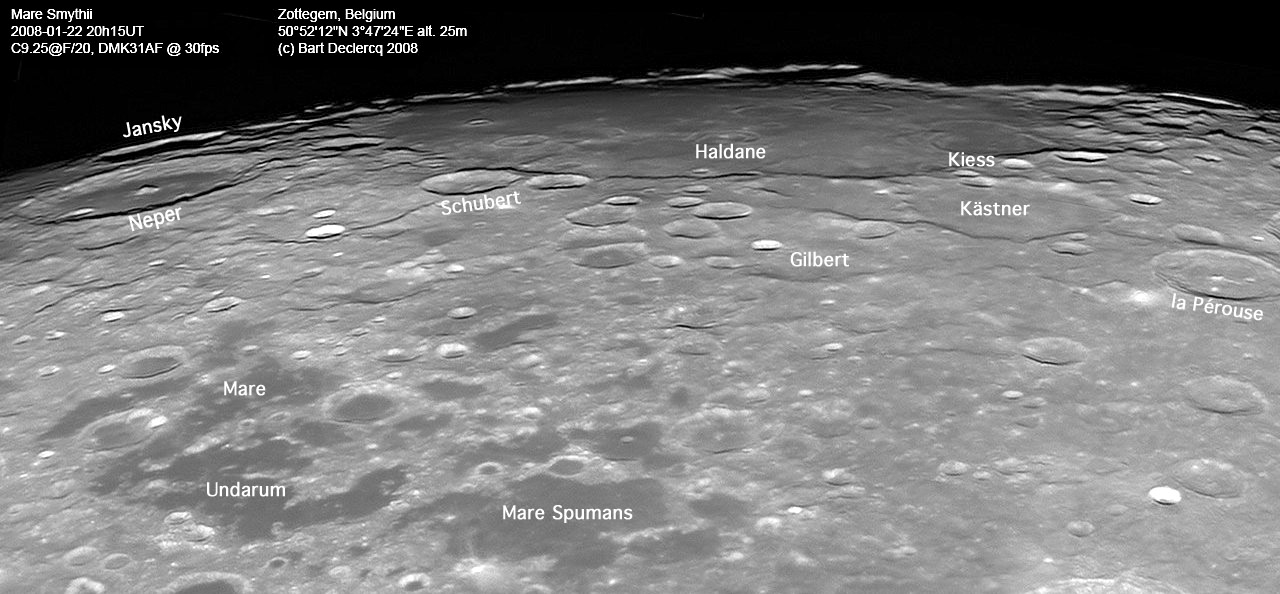September 10, 2017
Out On a Limb
Originally published February 25, 2008

image by Bart Declercq, Zottegem, Belgium
Floor-fractured craters (FFC) occur in ones and twos around the edges of most maria - Posidonius, Sabine/Ritter, Taruntius, Gassendi, Pitatus, etc. But in a few places they are in larger groups. One such area, hard on the eastern limb, is within Mare Smythii. In Bart's excellent image we see all the way across the mare in which 6-8 large craters are floor-fractured. Only Haldane and Kiess are labeled, but most of the other named features have concentric fractures on their floors, and many have erupted pyroclastic ashes. Another place with a concentration of FFC is on the opposite limb of Moon, in the Lavoisier-Gerard region. What these two areas have in common is shallow thicknesses of mare lavas, but there must be more than that for concentric fractures and ash do not occur at most of the craters around mare edges. We have reasonable models to explain how FFC formed, but what we don't know is why they formed where they did.
Chuck Wood
Technical Details
See image. Enhancement and nomenclature by CAW.
Related Links
Rükl plates 38, 49, III & IV
A lower Sun view
A slightly higher Sun view
Bart's lunar website
Apollo 15 view
Yesterday's LPOD: Eleven More Domes
Tomorrow's LPOD: From Orbit?
COMMENTS
(1) It's interesting to follow the links for the low-Sun and high-Sun views, and then to read the article about floor-fractured craters. As a nonprofessional and someone who is learning about the Moon as an amateur, I also find Sky & Telescope's "Field Map of the Moon" very helpful and would recommend it. It helps to pinpoint the features being described in the LPODs.
It took a tremendous amount of magma to create the floor-fractured craters and to flood the lunar basins. What happens to the interior of the Moon when that amount of material is displaced and floods to the surface? Is new magma created to replace the displaced material? Or does magma-creation simply stop at some point?
--Bill
(2) The total volume of erupted lunar magma is less than 1% of the Moon's volume so there aren't gaping subsurface holes, but it was a lot of magma. What happened was that the mare basins subsided into the potential voids as the magma went from being below the basins to on their surfaces. That bending downward created the circumferential fractures.
I too use the S&T map every day as I prepare LPOD - its nice that you use it with LPOD!
Chuck
COMMENTS?
Register, Log in, and join in the comments.



